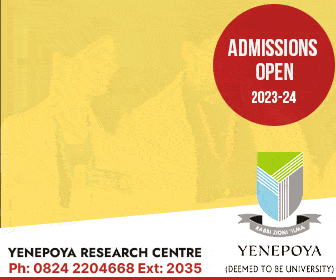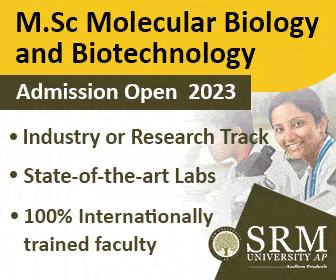Bioinformatics Project Ideas for UG/PG!
Bioinformatics is an interdisciplinary field that combines biology, computer science, and mathematics to analyze and interpret biological data. It plays a crucial role in genomics, proteomics, and other life sciences research. Undertaking bioinformatics projects at both undergraduate (UG) and postgraduate (PG) levels can provide students with valuable skills and contribute to cutting-edge research. In this article, we present a range of bioinformatics project ideas suitable for students at different levels of their academic journey.
Project 1: Genome Annotation and Functional Analysis
Genome annotation is a fundamental task in bioinformatics that involves identifying and characterizing the various elements within a DNA sequence. This project idea offers opportunities for both undergraduate (UG) and postgraduate (PG) students to delve into the exciting world of genomics while honing their bioinformatics skills.
Undergraduate Level: Annotate a Small Genome
At the undergraduate level, students can take on the task of annotating a small genome, such as that of a bacterium. This project provides a hands-on experience with essential bioinformatics tools like GeneMark or AUGUSTUS, which are widely used for gene prediction.
Bioinformatics Project Ideas – Steps for UG Students:
- Data Acquisition: Begin by obtaining the DNA sequence of the chosen organism from a reputable database, such as GenBank.
- Gene Prediction: Utilize tools like GeneMark or AUGUSTUS to predict the location of genes within the genome. These tools employ algorithms that analyze sequence features to identify potential genes.
- Functional Annotation: Once genes are predicted, assign functions to them by searching for similarities in existing protein databases (e.g., BLAST searches against databases like NCBI’s NR or Swiss-Prot). This step helps in understanding the roles these genes play in the organism’s biology.
- Regulatory Element Identification: Explore the genome for regulatory elements like promoters and enhancers, which control gene expression. Tools like MEME or FIMO can assist in motif discovery.
- Functional Analysis: Analyze the functional categories of genes and identify pathways or biological processes they are involved in. This information can shed light on the organism’s biology and potential applications.
Postgraduate Level: Eukaryotic Genome Analysis
For postgraduate students, the project can be extended to working on a eukaryotic genome, such as that of a fungal species. This level of analysis offers a more complex challenge and opportunities for advanced techniques like comparative genomics.
Additional Steps for PG Students:
- Comparative Genomics: Investigate evolutionary relationships by comparing the annotated genome to closely related species. Identify conserved genes and lineage-specific innovations, which can provide insights into the species’ evolutionary history.
- Structural Annotation: Go beyond gene prediction by annotating other genomic
features like non-coding RNAs, transposable elements, and pseudogenes. This comprehensive annotation will provide a more detailed view of the genome.
- Functional Enrichment Analysis: Perform enrichment analyses to identify overrepresented gene functions or pathways. This can help in understanding the biological significance of the genes identified and their potential roles in the organism.
- Visualization: Create visual representations of the annotated genome, such as circular genome maps or synteny plots, to convey complex information effectively.
- Publication: Encourage PG students to publish their findings in reputable scientific journals or present their work at conferences, contributing to the broader field of genomics.
Genome annotation and functional analysis projects offer a valuable learning experience for both undergraduate and postgraduate students in bioinformatics. These projects not only enhance students’ computational skills but also contribute to our understanding of the genetic makeup and biological functions of different organisms, from bacteria to eukaryotes.
Project 2: Metagenomics Analysis
Metagenomics is a rapidly evolving field that allows researchers to explore the genetic diversity and functional potential of entire microbial communities within environmental samples. This project idea offers engaging opportunities for both undergraduate (UG) and postgraduate (PG) students to dive into the world of metagenomics, from the analysis of small datasets to more complex and comprehensive projects.
Undergraduate Level: Analyze a Small Metagenomic Dataset
At the undergraduate level, students can embark on the analysis of a small metagenomic dataset obtained from environmental samples. This project provides hands-on experience with the foundational aspects of metagenomic analysis.
Steps for UG Students:
- Dataset Selection: Choose a small metagenomic dataset, such as soil, water, or gut microbiome samples, from publicly available sources like NCBI’s Sequence Read Archive (SRA).
- Data Preprocessing: Clean and preprocess the raw sequencing data by removing low-quality reads, adapters, and other artifacts.
- Taxonomic Profiling: Utilize tools like Kraken, MetaPhlAn, or QIIME to identify and quantify the microbial taxa present in the sample. This step provides insights into the composition of the microbial community.
- Diversity Assessment: Calculate diversity metrics (e.g., Shannon diversity index) to assess the richness and evenness of microbial species within the sample. Visualize diversity patterns using appropriate plots.
- Functional Annotation: Predict the functional potential of the microbial community by aligning sequences to databases like KEGG or COG and assigning functional categories to the genes.
- Ecological Inference: Infer potential ecological roles of detected microbes based on taxonomic and functional information. Are there any correlations between specific taxa and functions?
Postgraduate Level: Advanced Metagenomics Analysis
For postgraduate students, the project can be scaled up to tackle more extensive metagenomics analysis, potentially focusing on human microbiota or complex environmental microbiomes.
Additional Steps for PG Students:
- Large Dataset Handling: Work with larger and more complex metagenomic datasets. Consider sequencing data from diverse human body sites (e.g., gut, skin, oral) or complex environmental niches (e.g., extreme environments, wastewater treatment plants).
- Advanced Taxonomic Profiling: Use advanced tools like MetaBAT, MaxBin, or CONCOCT for binning metagenomic contigs into draft genomes, allowing for a deeper understanding of individual microbial species within the community.
- Functional Profiling: Employ tools such as HUMAnN or MEGAN to perform functional profiling, which provides insights into the metabolic potential of the microbial community.
- Statistical Analysis: Apply statistical tests (e.g., differential abundance analysis) to identify significant differences in microbial composition or functional potential between sample groups.
- Biological Interpretation: Investigate the ecological and physiological significance of the identified microbes and functions. Are there potential implications for human health or environmental processes?
- Publication and Presentation: Encourage PG students to disseminate their findings through research publications or presentations at conferences, contributing to the growing field of metagenomics research.
In summary, metagenomics analysis projects offer a dynamic and multidisciplinary learning experience for both undergraduate and postgraduate students. These projects enable students to explore the intricate world of microbial communities, fostering skills in data analysis, bioinformatics, and ecological inference while making meaningful contributions to our understanding of diverse ecosystems. Bioinformatics Project Ideas.
Project 3: Protein Structure Prediction
Protein structure prediction is a critical area of bioinformatics that involves determining the three-dimensional arrangement of atoms in a protein molecule. It is a fascinating field with applications in drug discovery, understanding protein function, and more. This project idea provides opportunities for both undergraduate (UG) and postgraduate (PG) students to explore protein structure prediction, ranging from predicting secondary structures to tackling tertiary structure prediction and studying protein-ligand interactions.
Undergraduate Level: Predict the Secondary Structure
At the undergraduate level, students can begin by predicting the secondary structure of a protein sequence. This project offers insights into the fundamental aspects of protein folding and structure prediction.
Steps for UG Students:
- Data Selection: Choose a protein sequence of interest, preferably from a well-studied organism, and obtain its amino acid sequence.
- Secondary Structure Prediction: Utilize tools like PSIPRED or Porter to predict the secondary structure elements (e.g., alpha helices, beta strands) within the protein sequence.
- Validation: Compare the predicted secondary structure with experimentally determined structures, if available, to assess the accuracy of the prediction.
- Biological Implications: Explore how the secondary structure relates to the protein’s function or interaction with other molecules.
Postgraduate Level: Tertiary Structure Prediction and Protein-Ligand Interactions
For postgraduate students, the project can advance to tertiary structure prediction, which involves predicting the three-dimensional arrangement of atoms in the protein molecule. Additionally, students can delve into the study of protein-ligand interactions, which is essential for understanding drug binding and other biochemical processes.
Additional Steps for PG Students:
- Tertiary Structure Prediction: Select a protein for which the tertiary structure is not yet resolved or is of interest for further investigation. Employ advanced software like Rosetta or I-TASSER to predict the 3D structure of the protein.
- Model Evaluation: Assess the quality of the predicted tertiary structure using metrics like RMSD (Root Mean Square Deviation) by comparing it to experimentally determined structures or high-quality reference models.
- Protein-Ligand Docking: Learn about protein-ligand interactions by conducting molecular docking simulations. Use software like AutoDock or Vina to predict the binding mode of small molecules (ligands) to the protein of interest.
- Binding Affinity Calculation: Calculate binding affinities to estimate the strength of protein-ligand interactions. Understand the factors that contribute to ligand binding and specificity.
- Biological Insights: Analyze the biological implications of the predicted protein structure and ligand interactions. How do these insights contribute to understanding the protein’s function or potential drug targets?
- Publication and Presentation: Encourage PG students to share their findings through research publications or presentations at scientific conferences, contributing to the field of structural biology and drug discovery.
In summary, protein structure prediction projects provide valuable opportunities for both undergraduate and postgraduate students to develop skills in computational biology, structural bioinformatics, and molecular modeling. These projects not only deepen their understanding of protein structure and function but also have practical applications in various domains, including drug design and biomedical research.
Project 4: Phylogenetic Analysis
Phylogenetic analysis is a crucial aspect of evolutionary biology and bioinformatics that involves studying the evolutionary relationships among organisms. This project idea offers opportunities for both undergraduate (UG) and postgraduate (PG) students to engage in phylogenetic analysis, starting with constructing basic phylogenetic trees and progressing to more complex methods.
Bioinformatics Project Ideas – Undergraduate Level: Construct a Simple Phylogenetic Tree
At the undergraduate level, students can begin by constructing a basic phylogenetic tree based on a gene or protein sequence. This project provides a foundational understanding of phylogenetics and evolutionary relationships.
Steps for UG Students:
- Gene or Protein Selection: Choose a gene or protein of interest that is well-documented and has sequences available for multiple organisms.
- Sequence Alignment: Align the sequences of the chosen gene or protein using software like ClustalW or MAFFT to identify conserved regions.
- Phylogenetic Tree Construction: Utilize software such as MEGA or PhyML to construct a phylogenetic tree based on the aligned sequences. Apply methods like neighbor-joining or maximum parsimony.
- Tree Visualization: Visualize the phylogenetic tree, highlighting the evolutionary relationships among the organisms.
- Interpretation: Gain insights into the evolutionary history and relatedness of the organisms based on the tree’s topology. Consider factors like branching patterns and branch lengths.
Postgraduate Level: Complex Phylogenetic Analyses and Co-evolutionary Patterns
Bioinformatics Project Ideas – For postgraduate students, the project can advance to more complex phylogenetic analyses, incorporating maximum likelihood methods and exploring co-evolutionary patterns among genes or organisms.
Additional Steps for PG Students:
- Maximum Likelihood Analysis: Learn and apply maximum likelihood methods for phylogenetic tree reconstruction, which offer more accurate models of sequence evolution. Software packages like RAxML or PhyML can be used.
- Molecular Clock Analysis: Investigate the concept of molecular clocks to estimate divergence times between species. This involves incorporating evolutionary rates into phylogenetic analyses.
- Co-evolutionary Analysis: Explore co-evolutionary patterns between genes, proteins, or organisms using tools like Coevol or CAPS. Understand how changes in one component correlate with changes in another.
- Advanced Tree Visualization: Use advanced tree visualization tools to create informative and publication-quality figures. Highlight key evolutionary events or relationships.
- Biological Interpretation: Analyze the implications of the phylogenetic findings. How do the results contribute to our understanding of evolutionary processes, adaptations, or co-evolutionary dynamics?
- Publication and Presentation: Encourage PG students to disseminate their findings through research publications or presentations at scientific conferences, contributing to the field of evolutionary biology and phylogenetics.
In summary, phylogenetic analysis projects offer a captivating journey into the study of evolutionary relationships among organisms. These projects provide valuable insights into the evolutionary history of genes, proteins, and species, and they equip students with essential skills in bioinformatics and computational biology. Additionally, complex phylogenetic analyses enable postgraduate students to explore cutting-edge methods and contribute to our understanding of co-evolutionary dynamics in biology.
Project 5: Drug Discovery and Virtual Screening
Drug discovery is a multidisciplinary field that combines biology, chemistry, and computational methods to identify and design potential drug candidates. This project idea provides opportunities for both undergraduate (UG) and postgraduate (PG) students to explore the exciting world of drug discovery, starting with basic virtual screening experiments and progressing to advanced structure-based drug design.
Undergraduate Level: Basic Virtual Screening
At the undergraduate level, students can start by learning about drug databases and conducting basic virtual screening experiments to identify potential drug candidates. This project offers an introduction to the concepts and tools used in drug discovery.
Steps for UG Students:
- Drug Database Exploration: Familiarize yourself with drug databases like PubChem or DrugBank. Select a target protein of interest, preferably one with known drug-binding sites.
- Ligand Preparation: Retrieve ligand molecules (small compounds) from the database that may potentially bind to your target protein. Prepare the ligands by removing any irrelevant atoms or functional groups.
- Protein-Ligand Docking: Utilize software tools like AutoDock or PyRx to perform virtual docking experiments. Dock the prepared ligands into the binding site of the target protein and calculate binding energies.
- Analysis: Analyze the docking results to identify potential drug candidates. Consider factors like binding energy, binding pose, and ligand-protein interactions.
- Visualization: Visualize the binding interactions using molecular visualization software. Understand how the ligands interact with the target protein.
Postgraduate Level: Structure-Based Drug Design and Molecular Dynamics
For postgraduate students, the project can advance to structure-based drug design, including in-depth studies of protein-ligand interactions and the use of molecular dynamics simulations for drug candidate evaluation.
Additional Steps for PG Students:
- Protein-Ligand Interactions: Dive deeper into the study of protein-ligand interactions. Investigate specific binding modes, hydrogen bonds, hydrophobic interactions, and other molecular interactions between the ligands and the target protein.
- Molecular Dynamics Simulations: Learn about molecular dynamics simulations using software like GROMACS or AMBER. Perform simulations to study the dynamic behavior of the protein-ligand complex over time.
- Free Energy Calculations: Apply advanced techniques like free energy calculations to estimate binding affinities more accurately. Understand the thermodynamics of ligand binding.
- Drug Candidate Evaluation: Evaluate the potential drug candidates based on their stability, binding affinity, and pharmacokinetic properties. Consider factors like drug-likeness, toxicity, and solubility.
- Biological Interpretation: Analyze the biological relevance of the identified drug candidates. Explore their potential applications, therapeutic targets, and mechanisms of action.
- Publication and Presentation: Encourage PG students to share their findings through research publications or presentations at scientific conferences, contributing to the field of drug discovery and structure-based drug design.
In conclusion, drug discovery and virtual screening projects offer a fascinating exploration of the intersection between computational biology and pharmaceutical research. These projects equip students with valuable skills in computational chemistry, molecular modeling, and drug development, making them well-prepared for careers in pharmaceuticals, biotechnology, and academic research.
Project 6: RNA-Seq Data Analysis – Bioinformatics Project Ideas
RNA-Seq is a powerful technique for studying gene expression at the transcript level. This project idea provides opportunities for both undergraduate (UG) and postgraduate (PG) students to gain experience in RNA-Seq data analysis, starting with the basics and progressing to more advanced techniques.
Undergraduate Level: Basic RNA-Seq Data Analysis
At the undergraduate level, students can begin by analyzing RNA-Seq data from a small experiment. This project introduces fundamental steps in RNA-Seq data analysis, including quality control, mapping, and differential gene expression analysis.
Steps for UG Students:
- Data Acquisition: Obtain RNA-Seq data from a small-scale experiment, such as those available in public repositories like the NCBI Sequence Read Archive (SRA).
- Quality Control: Perform quality control on the raw sequencing data to assess data quality and identify potential issues.
- Read Mapping: Use tools like STAR or HISAT2 to map the sequenced reads to a reference genome or transcriptome.
- Quantification: Estimate gene or transcript expression levels using software like featureCounts or StringTie.
- Differential Expression Analysis: Identify genes that are differentially expressed between experimental conditions using DESeq2 or edgeR.
- Visualization: Create visualizations, such as heatmaps or volcano plots, to illustrate the results of differential expression analysis.
Postgraduate Level: Advanced RNA-Seq Analysis
For postgraduate students, the project can advance to handling more extensive RNA-Seq datasets and exploring advanced analyses, such as alternative splicing, pathway analysis, and functional enrichment.
Bioinformatics Project Ideas – Additional Steps for PG Students:
- Large Dataset Handling: Work with larger RNA-Seq datasets, which may include multiple experimental conditions or time points. Implement strategies for efficient data processing.
- Alternative Splicing Analysis: Investigate alternative splicing events using tools like rMATS or SUPPA. Understand the regulation of splicing and its impact on gene expression diversity.
- Pathway Analysis: Perform pathway analysis to identify biological pathways that are significantly enriched with differentially expressed genes. Utilize tools like Enrichr or DAVID.
- Functional Enrichment Analysis: Conduct functional enrichment analysis to gain insights into the biological functions and processes associated with differentially expressed genes. Explore tools like GOseq or clusterProfiler.
- Visualization and Interpretation: Generate interactive visualizations, network analyses, and gene ontology plots to interpret the biological significance of the RNA-Seq data.
- Publication and Presentation: Encourage PG students to communicate their findings through research publications or presentations at scientific conferences, contributing to the field of transcriptomics and functional genomics.
RNA-Seq data analysis projects offer valuable hands-on experience in transcriptomics and bioinformatics. These projects equip students with essential skills in data analysis, statistical analysis, and biological interpretation, enabling them to contribute to our understanding of gene expression regulation and its implications in various biological processes and diseases.
Project 7: Network Analysis in Systems Biology
Network Analysis in Systems Biology
Network analysis is a powerful approach in systems biology, enabling the exploration of complex interactions between biological components. This project idea provides opportunities for both undergraduate (UG) and postgraduate (PG) students to engage in network analysis, ranging from constructing simple biological networks to investigating intricate networks and their implications in disease prediction.
Undergraduate Level: Building Simple Biological Networks
At the undergraduate level, students can begin by constructing a basic biological network, such as a gene regulatory network or a protein-protein interaction network, using publicly available data and Cytoscape software. This project introduces the fundamental principles of network construction and visualization.
Steps for UG Students:
- Data Collection: Gather biological data related to the network of interest from public databases like NCBI or STRING. This data could include gene expression data, protein interactions, or molecular pathways.
- Data Preprocessing: Clean and format the data to ensure it is suitable for network construction. Address any missing or inconsistent information.
- Network Construction: Use Cytoscape or similar network analysis tools to build the biological network. Connect nodes (genes or proteins) based on established criteria, such as co-expression or experimentally validated interactions.
- Visualization: Create a visually appealing and informative representation of the network. Customize the layout and styling to highlight node attributes, such as gene functions or expression levels.
- Basic Analysis: Conduct basic network analysis, such as identifying highly connected nodes (hubs) and calculating network centrality measures (e.g., degree, betweenness).
Postgraduate Level: Advanced Network Analysis and Disease Prediction – Bioinformatics Project Ideas
For postgraduate students, the project can advance to exploring more complex biological networks, analyzing network motifs, and using networks for disease prediction and analysis.
Additional Steps for PG Students:
- Complex Network Analysis: Work with larger and more intricate biological networks, including multi-layer networks or dynamic networks. Apply advanced network analysis techniques to uncover hidden patterns and structures.
- Network Motif Analysis: Investigate network motifs, which are recurring subgraphs within the network. Analyze their significance and potential roles within the biological context.
- Network-Based Disease Predictions: Explore the use of network-based approaches for predicting disease-associated genes or identifying potential drug targets. Employ methods such as random walk-based algorithms or diffusion-based techniques.
- Biological Interpretation: Interpret the findings within the context of biology and disease mechanisms. Understand how network properties and motifs relate to biological processes or disease pathways.
- Visualization and Reporting: Create comprehensive visualizations, such as pathway maps or interactive network diagrams, to illustrate the results of network analysis. Summarize the findings in research papers or reports.
- Publication and Presentation: Encourage PG students to disseminate their research findings through research publications or presentations at scientific conferences, contributing to the field of systems biology and network analysis.
Network analysis in systems biology projects offers an exciting opportunity to explore the complex interactions within biological systems. These projects equip students with valuable skills in data analysis, network construction, and biological interpretation, enabling them to contribute to our understanding of complex biological networks and their role in health and disease.
Project 8: Machine Learning in Bioinformatics
Machine Learning in Bioinformatics
Machine learning is revolutionizing the field of bioinformatics by providing tools to analyze and extract insights from biological data. This project idea offers opportunities for both undergraduate (UG) and postgraduate (PG) students to explore machine learning in the context of bioinformatics, ranging from introductory concepts to advanced techniques.
Undergraduate Level: Introduction to Machine Learning in Bioinformatics
Bioinformatics Project Ideas – At the undergraduate level, students can begin by learning the basics of machine learning and applying them to a simple bioinformatics problem, such as predicting protein function. This project provides an introduction to the principles of machine learning and its applications in biology.
Steps for UG Students:
- Machine Learning Fundamentals: Familiarize yourself with the fundamentals of machine learning, including supervised and unsupervised learning, classification, and regression.
- Data Collection: Obtain a dataset relevant to a bioinformatics problem. For instance, you can use protein sequence data with known functions.
- Data Preprocessing: Clean and preprocess the data, addressing missing values, feature scaling, and data transformation as needed.
- Feature Selection: Identify relevant features (e.g., sequence motifs, physicochemical properties) that may be predictive of the target variable (protein function).
- Model Selection: Choose a suitable machine learning algorithm (e.g., decision trees, support vector machines) for classification or regression based on the problem.
- Model Training: Train the machine learning model on the labeled dataset, using a portion of the data for training and the rest for validation.
- Model Evaluation: Assess the model’s performance using appropriate metrics (e.g., accuracy, F1-score) and visualize the results.
- Interpretation: Interpret the model’s predictions and understand which features are most important for the prediction task.
Postgraduate Level: Advanced Machine Learning in Genomics and Metagenomics
For postgraduate students, the project can delve into more advanced machine learning techniques, specifically applying deep learning to genomics or metagenomics classification problems.
Additional Steps for PG Students:
- Deep Learning for Genomics: Learn about deep learning architectures like convolutional neural networks (CNNs) or recurrent neural networks (RNNs) and their applications in genomics. Explore tasks like DNA sequence classification or gene expression prediction.
- Metagenomics Classification: Work with metagenomic data and apply advanced machine learning techniques to classify microbial communities or detect pathogens in metagenomic samples.
- Model Tuning: Experiment with hyperparameter tuning, model ensembles, or transfer learning to optimize the performance of deep learning models on bioinformatics datasets.
- Interpretability: Investigate methods for explaining deep learning predictions in genomics or metagenomics. Understand how specific features or regions in sequences influence the model’s decisions.
- Publication and Presentation: Encourage PG students to share their findings through research publications or presentations at scientific conferences, contributing to the growing field of machine learning in bioinformatics.
Machine learning in bioinformatics projects offers an exciting opportunity to apply data-driven approaches to solve biological problems. These projects equip students with valuable skills in data preprocessing, model selection, and interpretation, enabling them to make meaningful contributions to understanding biological systems through advanced machine learning techniques.
Bioinformatics Project Ideas – Bioinformatics offers a vast array of project possibilities for students at both undergraduate and postgraduate levels. These Bioinformatics Project Ideas for UG/PG not only enhance bioinformatics skills but also contribute to ongoing research in fields like genomics, proteomics, and drug discovery. Whether you are just starting your academic journey or pursuing advanced studies, these project ideas can help you explore the fascinating world of bioinformatics and make meaningful contributions to the field. Remember, the key to a successful bioinformatics project lies in curiosity, diligence, and a willingness to embrace interdisciplinary challenges.





























 features like non-coding RNAs, transposable elements, and pseudogenes. This comprehensive annotation will provide a more detailed view of the genome.
features like non-coding RNAs, transposable elements, and pseudogenes. This comprehensive annotation will provide a more detailed view of the genome.













Interested